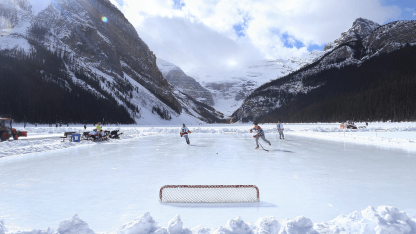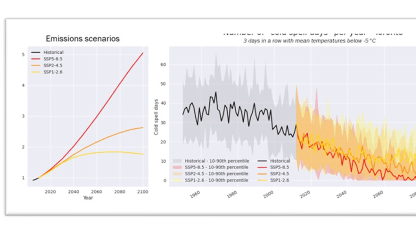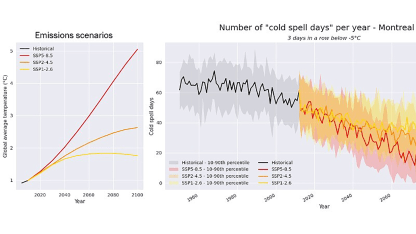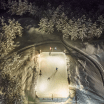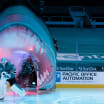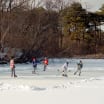As part of the NHL Green initiative celebrating Green Month in April, NHL.com will feature stories on how the NHL is looking to grow and protect the game of hockey and its communities for generations to come. Today, Frances Delaney from the Canadian Centre for Climate Services (CCCS) writes about what current climate data reveals about the future of natural outdoor ice. The CCCS is a division of Environment and Climate Change Canada and provides access to all things climate, from climate basics to data and resources that support adaptation decision-making.
Hockey is a part of Canada's culture and identity. Many of its famous hockey players, including Gordie Howe, Maurice Richard, Sidney Crosby and Wayne Gretzky, sharpened their hockey skills by playing on frozen ponds and backyard rinks.
Unfortunately, the changing climate in Canada has resulted in warmer winters, which have impacted outdoor hockey seasons across the country. This year, a strong El Nino resulted in warmer, drier conditions. Consequently, Canadians are more aware than ever of the challenges warm winter temperatures pose.
Therefore, the question on everyone's mind is, was this year a sign of the new normal?
ClimateData.ca is where Canadians can access, visualize, and analyze climate data for use in climate adaptation work, engineering studies, research, education and more. It provides an Analyze tool that allows users to explore climate data using their own custom threshold values (for example: the number of days per year with below-freezing temperatures). You can run these analyses from 2024 to the end of the century in 2099, drawing from 26 global climate models.
What does ClimateData.ca say about future winter temperatures in Canada?
Natural outdoor rinks (unrefrigerated rinks) require, above all else, consistent temperatures below the freezing point. Depending on your location, the exact amount of cold needed to form rink ice will vary. Typically, a certain number of cold days need to occur in a row before ice can form.
To demonstrate the functionality of ClimateData.ca's Analyze Page, we used the "cold spell days" feature to calculate the number of days where the daily mean (average) temperature remains below 5 degrees Celsius for at least three days in a row. Though not a perfect analogy for studying the viability of all outdoor hockey rinks, this method nonetheless demonstrates how the loss of cold is expected to change between now and the end of the century, according to climate models.
We ran this analysis on future winter temperatures for Toronto and Montreal, home of two of the Original Six NHL teams, by the end of this century. The results show a notable decline in cold temperatures over time, which begs the question of will unrefrigerated outdoor hockey rinks in these cities exist in the future?
Toronto
The results speak for themselves. By the 2080s, Toronto could see zero of these cold spell days, at least under the highest emissions scenario, also known as "SSP5-8.5," which is described in ClimateData.ca's learning zone article. This scenario, denoted by the red line on the plots below, describes a world where global temperatures could reach 5 degrees higher than the preindustrial average by 2100. Under a much lower emissions scenario (also known as SSP1-2.6), denoted by the yellow line on the graphs below, Toronto could experience 15 cold spell days per year by 2100, a 50 percent reduction from what it experiences now.
